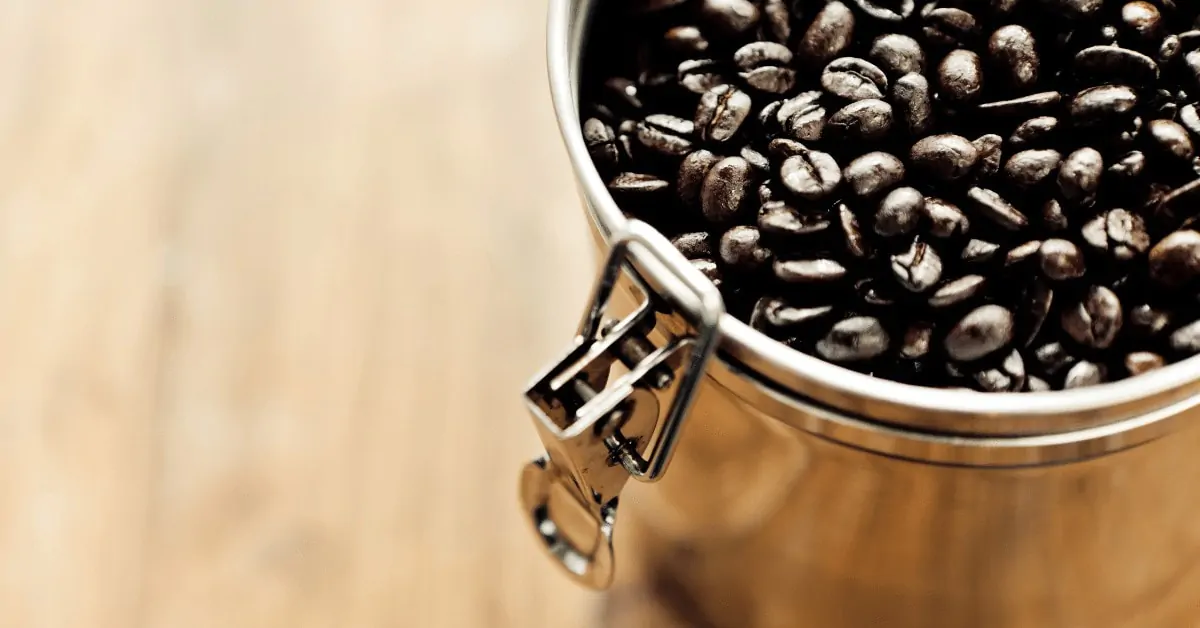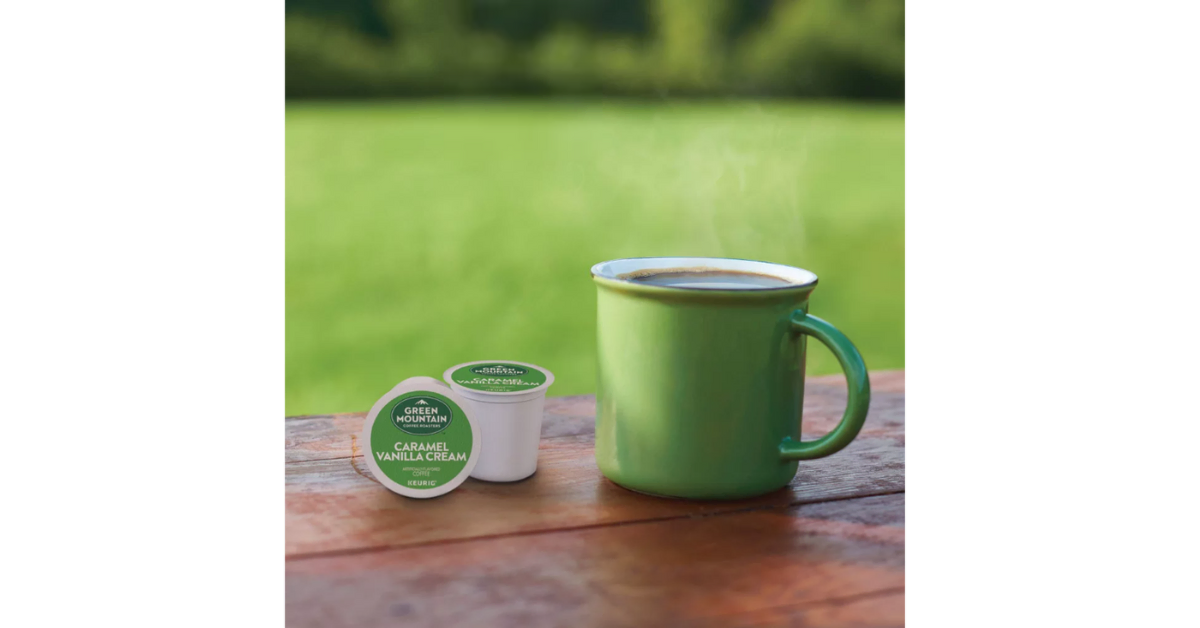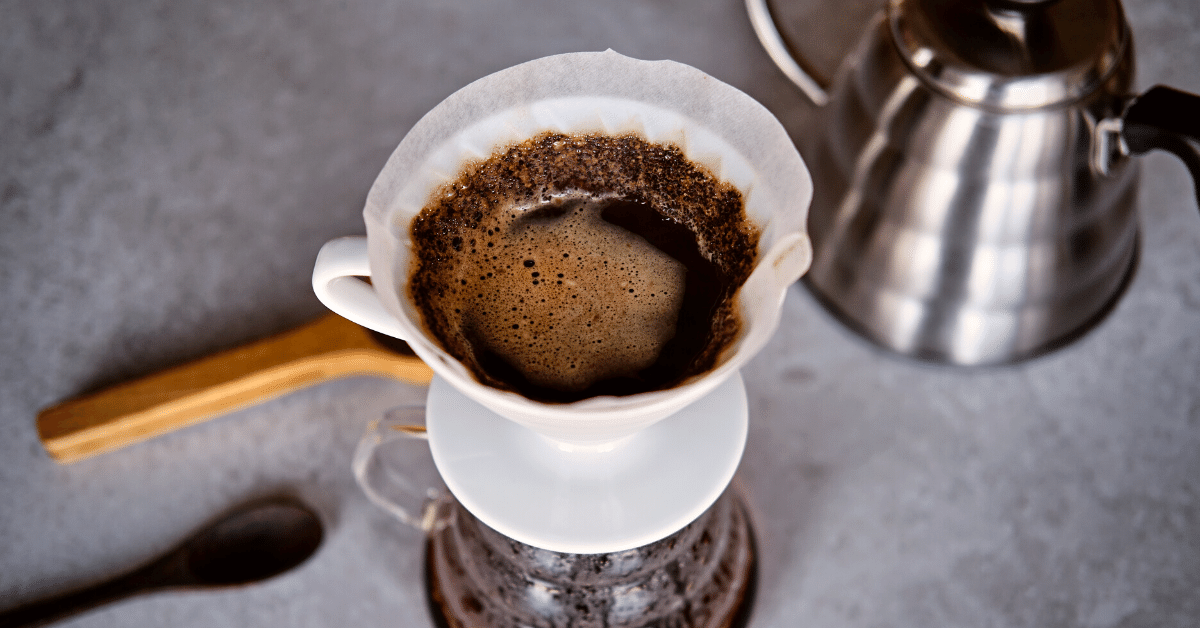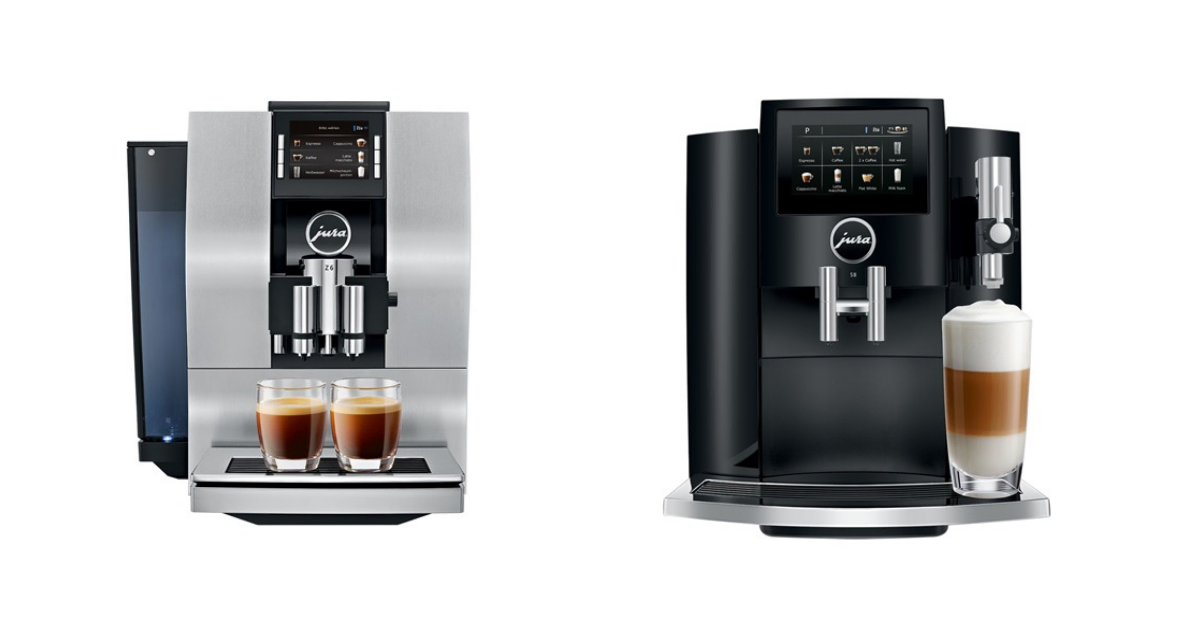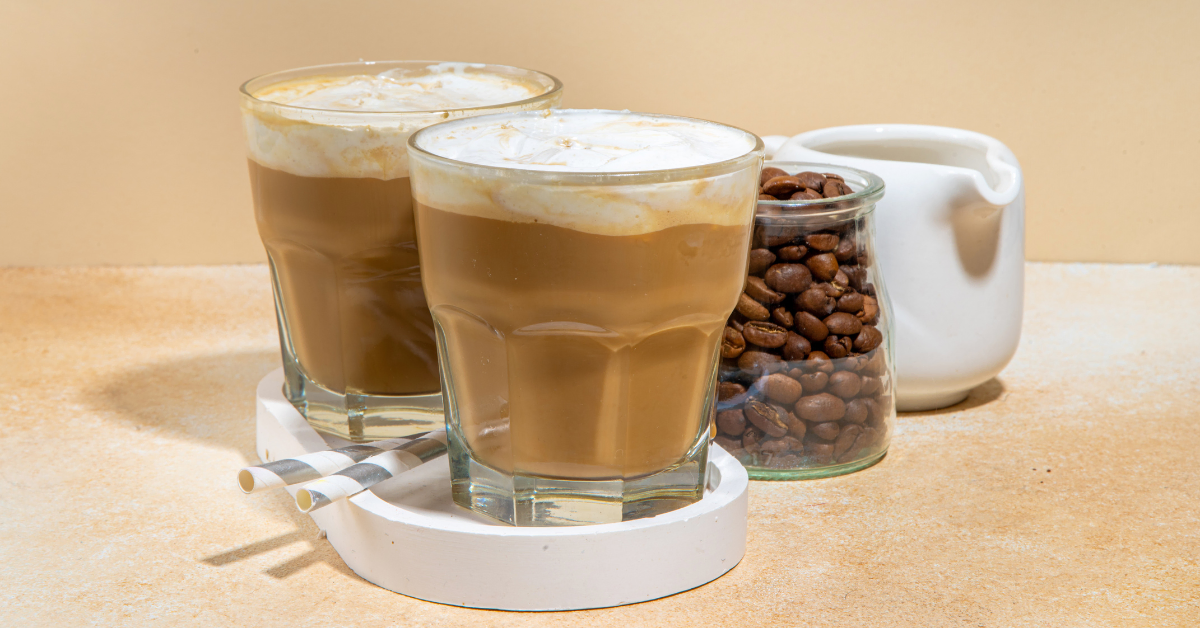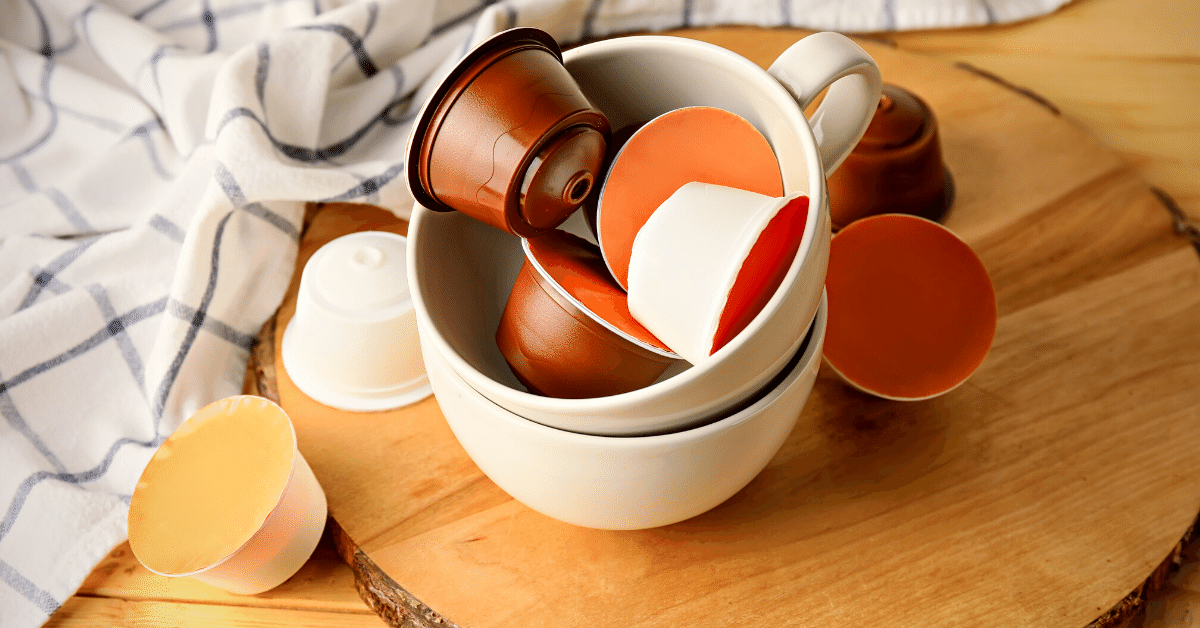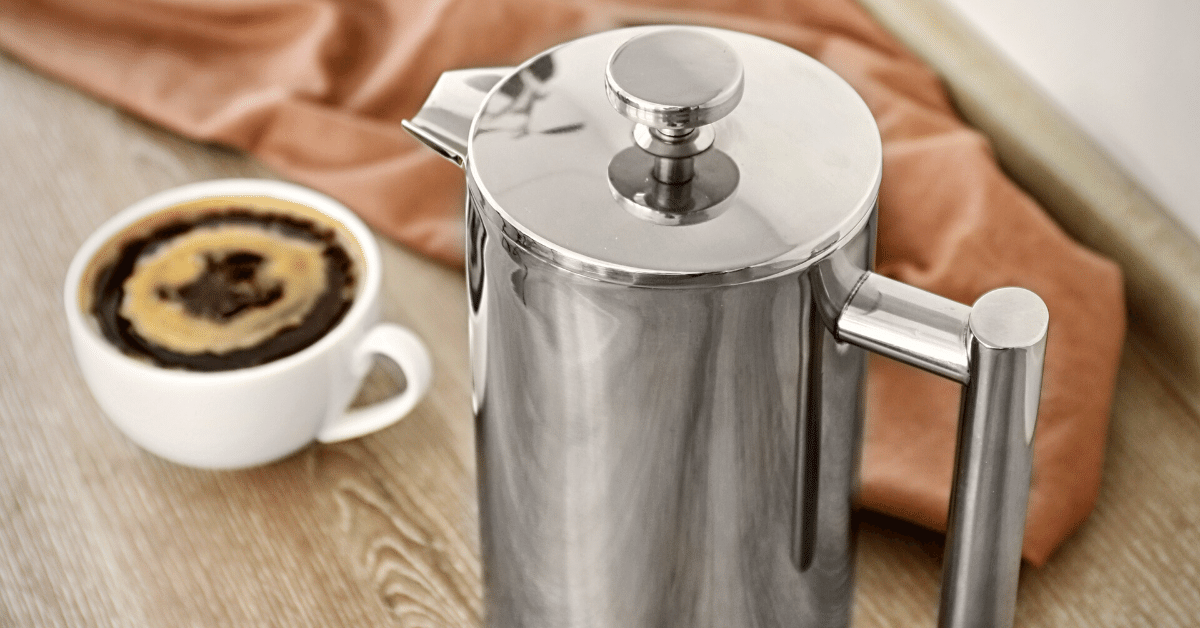Do you know what the ideal coffee temperature is? Jump into our guide and check out all the facts so you can brew a perfect cup of joe.
Making coffee is in no way a brainless activity.
Getting your brew just right means balancing out several factors, including brewing temperature.
So, what’s the ideal coffee temperature?
Well, there’s no single answer.
And to understand what affects the answer, we need to see how the brewing process works first.
So let’s get down to the bottom of things.
What’s the Ideal Coffee Brewing Temperature?
Why does the temperature of the water you add matter so much, you might ask? Well, because it’s directly responsible for the chemical reaction known as extraction.
You see, coffee contains over 1000 compounds, including:
- Sugars
- Oils
- Acids
- Caffeine
- Fiber
Now, each of these compounds has its own rate of extraction.
First to extract are acids. Acids are the simplest of them all and the ones responsible for acidity in coffee. By that, I mean sour flavors, not the actual pH level of the coffee.
Caffeine is very water-soluble, so it’s high up on the list. It’s believed that about 90% of caffeine is extracted within the first 30 seconds or so.
Next on the list are oils or fats, which add body to the coffee. However, if you’re using a paper filter, these compounds won’t make it into your cup, leaving your coffee without that rich mouthfeel.
After oils, sugars are the ones to dissolve next. A bit more molecularly complex, sugars need more time and energy to extract.
Finally, the last compounds that get into the cup are plant fibers. Now, while fibers are generally a necessary part of the diet, these extracted fibers aren’t really what you want.
See, fibers give the coffee bitter and earthy flavors. You might want some of that in your cup to create balance. But over-extraction of these compounds will make your coffee undrinkable.

But where does water temperature come into play?
Well, the water temperature may affect the solubility rate of certain compounds. For instance, acids, oils, and fibers are quicker to dissolve in hot water. On the other hand, some of these compounds might not extract at all in colder water.
As a result, your coffee will taste different depending on its brewing temperature.
And in this case, there is such a thing as the middle ground.
According to the Specialty Coffee Association, the ideal water temperature for brewing coffee is between 195°F and 205°F. At this temperature, all the solubles will get extracted at just the right amount for a delicious cup.
Now, a ten-degree range does leave us with a little bit of room to wiggle. And in fact, you should adjust it to the brewing method.
Why?
Because different brewing methods have different flow rates and coffee extraction times. You need to add those two variables into the equation to figure out the optimal temperature for a specific method.
| Brewing Method | Water Temperature |
| Pour Over | 200°F-205°F |
| AeroPress | 175°F-185°F |
| Espresso | 200°F |
| French Press | 190°F-195°F |
| Moka Pot | 158°F |
| Cold Brew | 68°F |
Pour Over
For pour-over coffee, the best temperature is closer to the upper limit (200°F-205°F) to get that perfect extraction. In most cases, that will give you optimal results.
With that being said, the pour-over method leaves enough room for improvisation. The coffee you get with this method is very delicate, and you can really feel every compound in the cup. A single-degree difference can make your cup taste completely different.
AeroPress
The AeroPress is an interesting one.
The manufacturer actually recommends going as low as 175°F for brewing dark roast and 185°F for light and medium.
And if you take a look at AeroPress Championship, you’ll see that many winners stick to temperatures lower than 180°F.
The reason why cooler water works for this method is because there’s also pressure added to the equation. Now, pressure also speeds up extraction. And so, by using cooler water, we can strike the perfect balance and not end up with an overly extracted cup.
Espresso
Like AeroPress, the espresso coffee maker also uses pressure. Does that mean you should use cooler water as well?
Well, that’s actually not the case here.
While AeroPress takes a few minutes to extract coffee, an espresso machine only needs about 30 seconds. As a result, it requires slightly warmer water.
Ideally, the right temperature is around 200°F. From there, you can adjust the temperature depending on the roast, as well as your personal taste preference.
French Press
For the French press, the ideal temperature should be closer to the recommended lower limit, between 190°F and 195°F.
The French press method takes about 6 minutes to brew, so by lowering the temperature, you ensure the coffee is not too bitter.
Moka pot
With Moka pot, you don’t have that much control over the extraction process. In other words, coffee is one when it’s pushed into the upper chamber, and you can’t force that.
But what you can do is preheat water before adding it to the Moka pot in the first place.
Research done on the subject actually showed that water doesn’t need to boil for the coffee to get pushed into the upper chamber. Instead, brewing starts at lower temps, thanks to vapor pressure.
Ideally, you should add water that’s preheated to 158°F. That way, the average extraction temperature will be somewhere around 190°F, which is ideal for a Moka pot.
When you add pressure, grind size, and amount into the formula, you get an optimally extracted cup of java.
Cold Brew
As the name suggests, this brewing method requires a cooler water temperature for extraction.
Ideally, you want to use room temperature, which is around 68°F.
But is that too cool for certain compounds to extract?
Well, it typically is. That’s why we increase the brewing time to as much as 12-24 hours to give them time to dissolve. And even then, certain compounds might not extract completely, like acids and fibers. That’s why cold brew tastes more mellow than hot brewed coffee.
At Which Temperature Should You Serve the Coffee?

Obviously, you don’t want to sip the coffee the second it’s brewed. Try doing that, and you’ll burn your mouth.
Now, doing that can burn your taste buds, which can take up to 2 weeks to heal. But what’s worse is that regular drinking of piping hot beverages is also a probable cancer trigger risk.
That’s why even the National Coffee Association USA recommends drinking beverages below 149°F to avoid damaging your throat.
According to a study, most people are drinking coffee at temperatures below 140°F anyway.
Aside from health, there are other reasons why you’d want to drink coffee at a lower temperature.
You see, most coffee notes shine at the so-called kids’ temperature, which is between 120°F and 140°F. At this range, all those subtle coffee flavors come to shine – the sweetness, the acidity, and the ever-slight bitter notes.
Well, it’s not that these flavor tones aren’t there when the coffee is very hot. But they’re masked behind that heat that burns our tongues.
And likewise, they won’t disappear once the coffee goes cold. But without the heat, the flavors and bitterness will be more apparent.
PRO NOTE
Don’t reheat your coffee once it drops below 120°F. A cool cup will still retain the flavor, although it will be milder. Reheating coffee, on the other hand, will only bring out those compounds that didn’t extract all the way. And trust me, they won’t taste any good.
FAQ
Have other questions related to coffee temperature? Let’s answer them now. Here’s a quick FAQ that should solve your doubts.
How to keep your coffee hot?
Keeping your coffee in a sealed thermal carafe is the best way to keep it hot for longer. A double-walled carafe uses a vacuum as insulation, allowing it to keep coffee hot for up to 12 hours. A proper seal is important, as it also prevents coffee from oxidizing.
How to cool down the hot coffee?
A coffee should cool down in about 10 minutes. If you can’t wait that much, consider adding milk, creamer, or ice cubes to speed up the process. Alternatively, you can blow into it or put it into the fridge.
Is boiling water too hot for coffee?
Yes, it is, as it will pull out all the bitter compounds and over-extract your coffee. If you heat up water to the boiling point, let it rest for about 30-60 seconds before using it to brew.
To Sum Things Up
As you can see, there is such a thing as an ideal coffee temperature.
According to the Specialty Coffee Association, that’s between 195°F and 205°F.
However, every brewing method requires a bit of tweaking due to other factors involved. And in the case of certain methods, like AeroPress and even cold brew, the water temperature is way below the recommended.
One thing to keep in mind, though – never drink coffee right away. Not only it’s healthier, but coffee also tastes way better when it’s slightly cooled.
Want to know more about different brewing methods? Here’s our article on different ways to make coffee.


